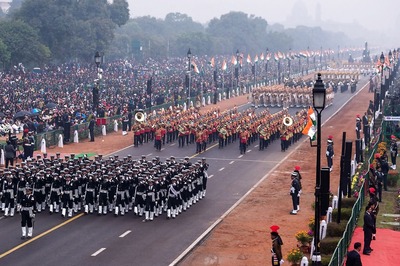
views
New Delhi: The dozens of vehicles that roared into northeast India this week on a rally from Indonesia symbolize deeper ties between the South Asian giant and Southeast Asia, but the dreadful roads along several parts of the 8,000 km journey also show how much remains to be done.
The caravan crossed jungles and mountains in eight nations before reaching the remote Manipur, bordering Myanmar, in an event promoting a high-level meeting between India and leaders from the Association of Southeast Asian Nations (ASEAN) in New Delhi on Thursday and Friday.
"The roads crumbled to begin with and then ceased to exist," said participants Bijoy Kumar and Vinod Nookla in a blog published by Mahindra & Mahindra, the Indian company that supplied the XUV 500 vehicles that participated. "In place of tarmac there were boulders and the road started becoming narrower by the kilometre."
The meeting in New Delhi will mainly be a ceremonial affair to mark 20 years of cooperation, Foreign Minister Salman Khurshid told Reuters. But it is held against the backdrop of Chinese assertiveness in the potentially oil and gas-rich South China Sea.
Some ASEAN countries contest claims by China in the waters, making it the biggest potential flash-point in the region. The United States has called for calm, but some ASEAN nations are also looking to India, the other regional heavyweight, to get involved.
"They want India to play a larger role. Those concerns are only increasing given the uncertain situation that is emerging," said C Raja Mohan, a strategic affairs expert at the Observer Research Foundation think-tank.
For India, improved relations with Southeast Asia will give it entry into one of the fastest-growing economic regions in the world and a source of raw materials needed for its own growth. But the broken-down roads between India and the nations to its southeast, a shortage of direct flights and constraints such as India's tiny diplomatic corps - comparable in size to New Zealand's - mean India trails China in relations with the region.
Trade between India and the 10-member ASEAN was up to $80 billion last year compared with $47 billion in 2008. An agreement on free trade in services and investment could be signed at the New Delhi meeting.
Direct flights from Delhi to Myanmar on SpiceJet are due to begin in the next few weeks. But India's role in the region is dwarfed by that of China, which enjoyed trade worth a record $363 billion with ASEAN countries in 2011 in an already established free trade area.
"What we need is far greater connectivity," Khurshid said in an interview, mentioning roads, railways and flights as areas needing work. "There is still a lot that can done, and we hope that over the next few months and years we will see considerable improvement," said Khurshid, who also described a 10-year plan to double the number of diplomats to reflect India's growing global ambitions.
PARTICIPANTS
The first meeting of ASEAN leaders in India is a watershed in India's efforts to build ties with Southeast Asia. The prime ministers of Singapore, Cambodia, Malaysia and Vietnam, the presidents of Myanmar and Indonesian, and the vice president of the Philippines are scheduled to attend. The other nations in the group are Thailand, Laos, and Brunei.
India walks a delicate line to balance its increasingly close partnership with Washington as President Barack Obama steps up the US presence in Asian, and the reality of living next door to China, Asia's fastest-growing superpower.
Khurshid played down the possibility of any tension with China and reiterated that India had no territorial claims in the South China Sea. "I don't think this is something that will reach hostility or conflict, there are differences obviously - China has a very clear perception about its sovereignty and it also has a very clear idea of how it wants to resolve these issues."
"It's not something that cannot be resolved, it is certainly not something in which we are directly involved, we've said categorically that there should be compliance and respect for the law of the sea." But India's "Look East" policy and a need to lock down energy supplies for its rapidly growing industrial sector are pushing it to gradually step up military activities in the region with more joint exercises and visits.
This month, India's navy chief said his force was ready to deploy naval vessels to the South China Sea to protect its oil-exploration interests there if needed.
India is exploring an oil and gas block with Vietnam in the disputed waters and in future is likely to bring more liquefied natural gas through the Malacca Straits.
Khurshid said that along with counter-terrorism, energy security was among India's top foreign policy priorities. "We have become far more resource orientated because development is of course heavily dependent on resources. We import 80 percent of our fuel," Khurshid said.
Ian Storey, senior fellow of the Institute of Southeast Asian Studies in Singapore, said India had yet to impress many ASEAN partners, despite strong ties to Vietnam, "India is not a serious player in Southeast Asia, it has aspirations to be a player, but it has a long way to go," he said. "A common view is that India talks the talk but doesn't walk the walk."



















Comments
0 comment